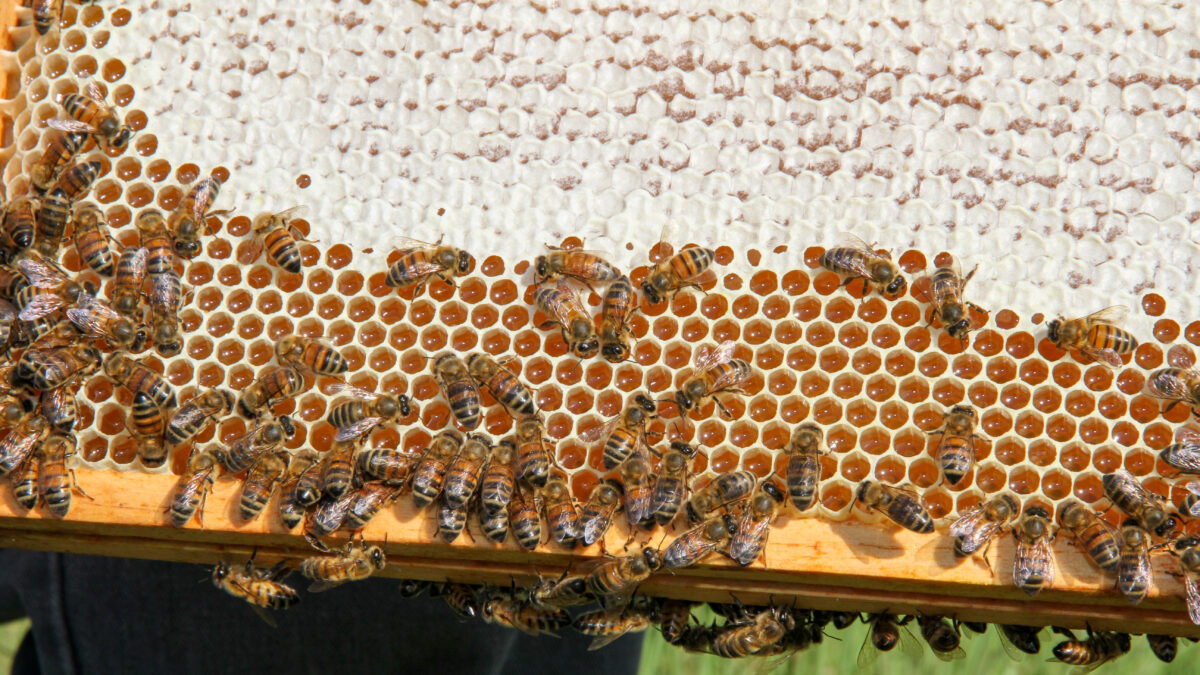Bees Please: Cooperation Needed to Protect a Vital Food Supply Link
Guest Author
Special Contributor to FB.org

photo credit: Alabama Farmers Federation, Used with Permission
Guest Author
Special Contributor to FB.org
Few people think about bees beyond positive images of honey and beautiful flowers or unpleasant memories of stings and pesky disruptions at picnics. Yet, each day we reap the benefit of these little workers, as bees provide one mouthful of food out of every three bites we take.
For several years, there has been growing concern that honey bees are under increased stress. Losses of both managed and wild pollinators could have profound impacts on the cost and availability of food – especially fruits, vegetables, meats and dairy products.
About 90 U.S. agricultural crops require honey bee pollination. Species such as apples, avocados, cranberries, blueberries, cherries, squash, cucumbers, melons and sunflowers require honey bees to provide more than 90 percent of their pollination needs. California 's $4 billion almond industry completely depends on honey bees, requiring 60 percent of managed colonies used in the U.S. All told, honey bee pollination adds more than $16 billion annually to the value of agricultural crops in the U.S. and up to $296 billion globally.
In the U.S., about three-fourths of bee pollination comes from managed honey bees, and the rest from wild bees and other pollinators. There are between 2.6 and 3.3 million managed bee colonies in the U.S. Commercial beekeepers normally have more than 300 hives each, which they transport around the country to provide pollination services to farmers. Unfortunately, commercial beekeepers have reported serious losses since 2006, with two causes attracting a lot of buzz: Colony Collapse Disorder and winter losses.
CCD is a syndrome with tell-tale signs but no clear cause: the adult bees have vanished, but a live queen, honey and immature bees remain. In 2006, beekeepers reported CCD losses of 30 to 90 percent. Similar mentions of bee disappearances also occurred in the 1880s, 1920s and 1960s. Other unusual colony losses have occurred locally in some parts of the U.S. for the past two centuries.
General losses occur to some degree every winter. Beekeepers can sustain normal losses of less than 18.9 percent. However, winter losses have averaged much higher— 29.6 percent -- for the past eight years. Total losses declined a bit to 23.2 percent in 2013-2014 (compared to a steep loss of 30.5 percent in 2012-2013 and 36 percent in 2007-2008). Of course, these numbers represent the average: Some states saw losses as high as 65 percent and others as low as 12 percent in 2013-2014.
Despite numerous claims of "smoking guns," ranging from neonicotinoid pesticides to cell phones, researchers haven 't narrowed bee decline to any single cause. A 2012 Report on the National Stakeholders Conference on Honey Bee Health underscored that there are multiple factors associated with CCD, the Varroa mite being one of the most important.
Consider the European Union, which suspended neonicotinoid use in 2013. Farmers in Germany and England growing rapeseed (canola oil) experienced devastating crop losses without the protection of these pesticides, but with little positive impact on honey bees for the cost. By contrast, neonicotinoids are still used in Australia, but with no history of the Varroa mite there, honey bees don 't appear to suffer the losses seen in Europe and the U.S.
Other leading causes of decline include weather, insufficient hive management, other pests, viruses, the nosema fungi, and a lack of diversity or availability of other sources of pollen and nectar. Even managed bee colonies used to pollinate crops require additional nearby pollen and nectar sources. Urbanization, development and landscaping near farm land or bee colony sites have reduced flowering plants, brush and other plants essential to supporting bees and other pollinators.
A wide range of stakeholders – beekeepers, regulators, farmers, ranchers, academic researchers, and federal agencies – are engaged cooperatively in trying to find solutions. Federal agencies have been directed to build pollinator habitats into their landscaping, construction and environmental preservation plans, and highway rights-of-way. Pollinator habitat preservation also played a role in maintaining the conservation reserve program in the 2008 and 2014 farm bills. Farmers and other landowners can do their parts as well, through responsible pesticide use and by maintaining pollinator habitat.
State and local pollinator plans foster the cooperation, good management and ongoing research that are all critical to protecting honey bees, and essential to preventing the sharp sting that consumers could feel from lower food supplies and higher prices.
Robert Giblin writes, speaks and consults about agricultural and food industry issues, policies and trends.
Top Issues
VIEW ALL